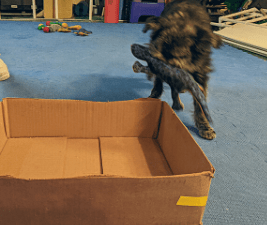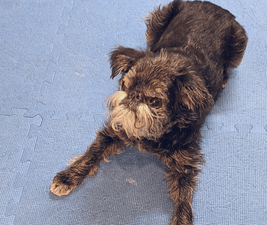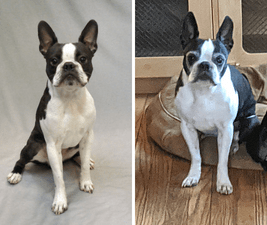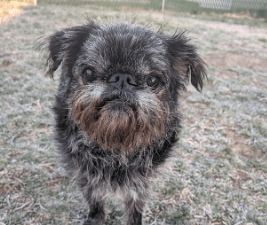Every day can be an adventure when you have an old dog. Tango, Fran’s 14.5-year-old Brussels Griffon, has us on a bit of a roller coaster lately.
It’s not that we mind cleaning up when he doesn’t quite make it outside. Or the loads of laundry on the days nothing stays down. The distressing part is that he’s not comfortable, can’t seem to get warm, and on some days, doesn’t want to play his special games.
Making choices
All this came on rather suddenly, so Fran’s working with his veterinarian to figure out how to make him happy and comfortable again. We’ve known the vet for many years, and when she took a look at him, asked Fran if they had to have “the talk.” It’s not the same talk parents have with their pre-teens. It’s the tough choices talk.
And we’re there. At Tango’s age and state of decay (arthritis, vision and hearing loss, etc.) we’re not going to subject him to invasive or painful diagnostic tests. If we did, and discovered something, we also wouldn’t subject him to invasive or painful treatment. So there would be no point.
Comfortable is the goal
So we’re treating the symptoms for now. Hoping our vet’s familiarity with Tango, knowledge, and experience, will keep Tango comfortable most days. As long as the good days outnumber the not-so-good ones, we’ll keep going.
Ironically, with Tango, the one diagnosis we thought was a sure bet, kidney disease/failure, isn’t. His kidney function is just dandy. It’s ironic because he’s been eating prescription kidney diet food most of his life. He had crystals when we was about two, so he’s been on a special diet ever since. He’ll be thrilled now that he can have whatever food he likes. He’s happy beyond belief to get unlimited Chicken Heart Treats. Even the vet says we don’t have to care about crystals any more.
Free to indulge
In a way, it’s going to be a good time with Tango, however long it is. When you don’t have to worry about long-term consequences, you can indulge him. He’ll get the extra squirt of whipped cream or spoon of ice cream. And we’ll turn up the heated throw an extra notch, just for Tango.
We’ve had dogs for lots of years and we’ve had all kinds of end-of-life experiences with them. People, especially first-time dog owners, will ask when you know it’s time. In our experience, your dog will let you know when they’re done. By the same token, they’ll also do their best to stay with you if that’s what you need. Dogs’ love for their people is unconditional throughout their lives.
Enjoyed this post? Click here to sign up for the weekly newsletter and never miss another!












